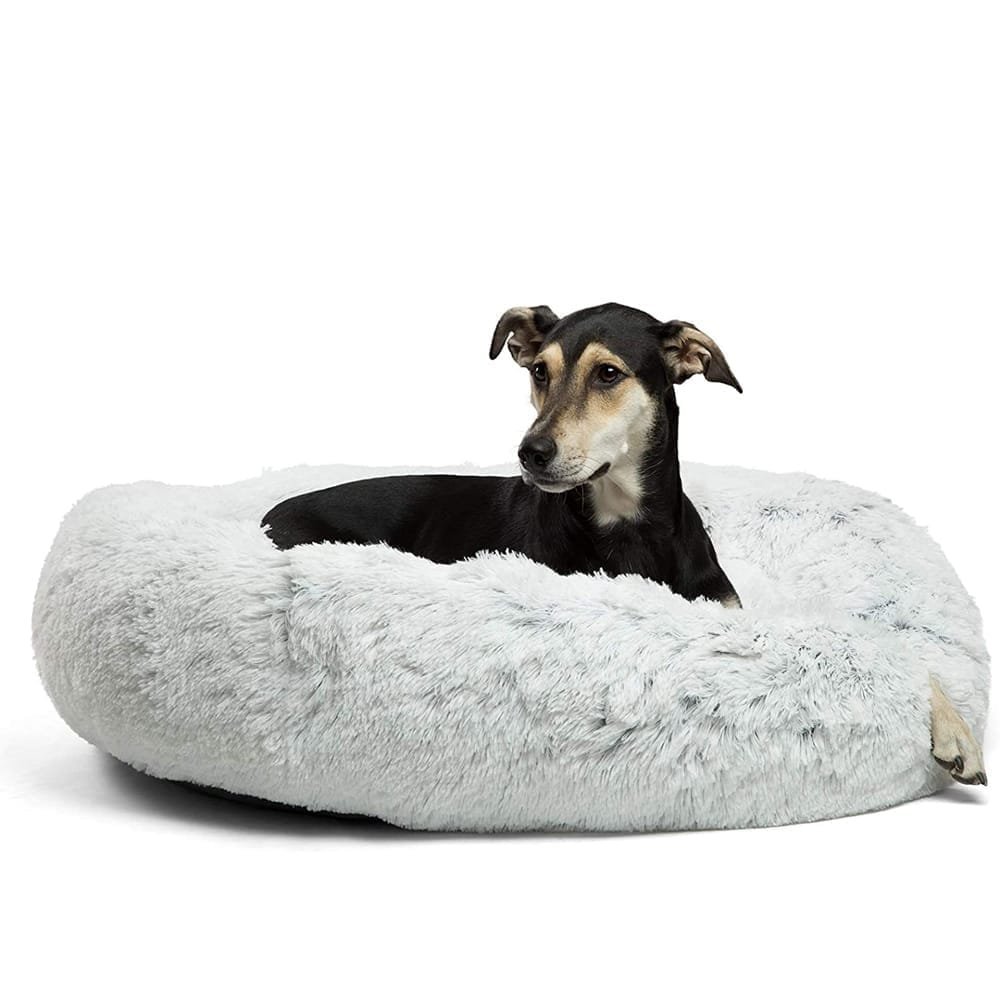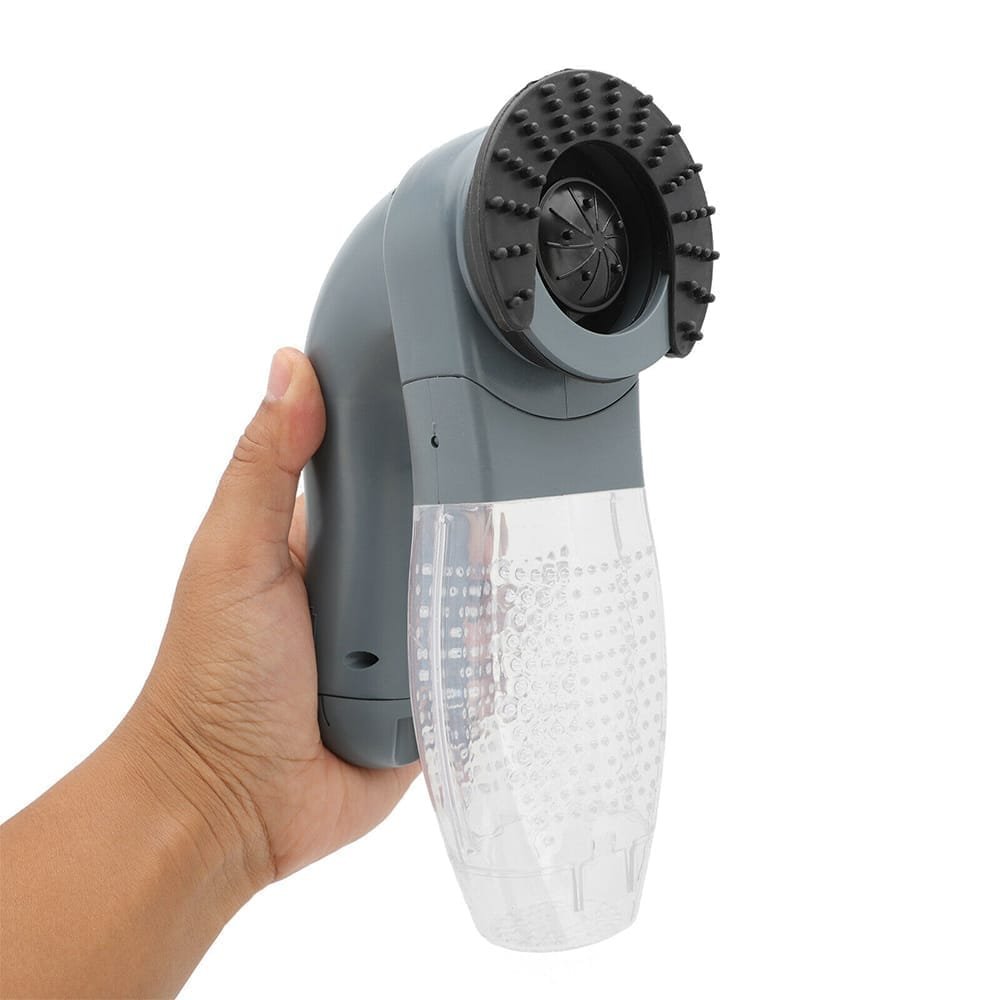When selecting an appropriate dog sleeping bed for your dog, it is vital to consider the individual sleeping habits dictated by their breed, age, and health. Each of these factors plays a crucial role in determining what type of dog sleeping bed will provide optimal comfort and support.
Dog breeds exhibit varying sleeping preferences and positions. For example, larger breeds such as Great Danes may prefer more spacious sleeping arrangements, whereas smaller breeds like Chihuahuas often seek snug and secure areas to curl up in. Furthermore, certain breeds have tendencies toward particular sleeping styles; retrievers might stretch out, while terriers often prefer to burrow. Understanding these preferences will guide your selection process effectively.
Age is another significant factor influencing sleeping needs. Puppies usually require softer bedding that accommodates their growing bodies, while older dogs may benefit from orthopedic beds that provide extra support for their joints. Health conditions such as arthritis can necessitate specialized beds designed to alleviate discomfort and promote restful sleep. Recognizing your dog’s unique health requirements will assist in making a more informed choice.
Additionally, your dog’s size and energy levels play a key role in determining their ideal sleeping environment. High-energy dogs may prefer beds that offer more space to sprawl out after a long day of play, whereas calmer dogs may enjoy more snug options. Moreover, the sleeping position can indicate the best bed type; dogs who like to curl up may prefer raised, cushioned beds, while those who sleep on their sides may benefit from flatter, more supportive designs.
In summary, understanding your dog’s specific sleeping needs is essential when selecting the perfect sleeping bed. By considering factors like breed, age, health, size, energy level, and sleeping position, you can ensure that your dog enjoys restful and rejuvenating sleep in a suitable environment.
Table of Contents
Types of Dog Sleeping Beds: A Comprehensive Overview

When it comes to selecting the perfect dog sleeping bed for your furry companion, understanding the variety of options available is crucial. Each type of dog bed caters to specific preferences and needs, ensuring that your pet enjoys a comfortable and restful sleep. Here, we will explore four prominent types of dog beds: orthopedic beds, bolster beds, flat beds, and heated beds, each designed to offer distinct advantages.
Orthopedic beds are specifically engineered to provide support to dogs with joint issues or older canines experiencing discomfort. These beds typically feature memory foam or other supportive materials, which help to alleviate pressure on joints, promote spinal alignment, and improve overall sleep quality. Ideal for senior dogs or those recovering from surgery, orthopedic beds are a sound investment in your pet’s health.
Bolster beds feature raised edges, creating a cozy enclosure for dogs that enjoy snuggling or resting their heads on a comfortable surface. These beds often come in various shapes and sizes, accommodating small to large breeds. The bolstered edges provide security and support, making them a perfect choice for anxious pets or those who simply prefer a sense of containment while they sleep.
Flat beds, also known as mat beds or cushion beds, are simple and versatile options that offer padding without the extra features of other types. These beds can be used in crates, as travel beds, or even as indoor lounging spots. While they may lack certain support elements, flat beds are lightweight and easy to maintain, providing a convenient option for pet owners.
Heated beds are particularly beneficial for pets that require extra warmth, such as small or elderly dogs. These beds provide a gentle, safe heat source, promoting relaxation and comfort, especially in colder climates. Utilizing a heated bed can be particularly advantageous during the winter months, creating a cozy retreat for your dog. Each type of dog bed serves specific needs, ensuring that pet owners can find the ideal solution for their beloved companions.
Factors to Consider When Choosing a Dog Sleeping Bed

When selecting the ideal dog bed, various factors come into play that can significantly influence your dog’s comfort and well-being. One of the most crucial aspects is the size of the bed. It is essential to measure your dog while they are lying down and standing to ensure the bed provides adequate space for them to stretch out comfortably. A correctly sized bed not only accommodates their dimensions but also contributes to their overall posture and support.
Another significant factor is the material used in the dog bed. Synthetic materials are often easy to clean but may not offer the same level of comfort and breathability as natural fabrics. Orthopedic beds typically feature memory foam or similar materials, providing support for aging dogs or those with joint issues. It is beneficial to consider your dog’s specific needs, as certain materials can alleviate pressure points and ensure restful sleep.
Durability is equally important when selecting a dog bed. Considering your dog’s habits, whether they are an aggressive chewer or a calm sleeper, can guide your choice. Invest in high-quality beds made from strong materials that can withstand wear and tear over time. Additionally, maintenance should not be overlooked. Look for beds with removable and washable covers to ensure cleanliness, as dogs can often track dirt and odors into their sleeping areas.
Lastly, the style of the dog bed is a consideration that should not be ignored. With various shapes, colors, and designs available, it is possible to choose a bed that complements your home decor while meeting your dog’s practical needs. By thoughtfully considering size, material, durability, maintenance, and style, you can make an informed choice that enhances your dog’s sleeping experience.
Customizing Your Dog’s Sleep Space

Creating a personalized sleeping area for your dog is essential in promoting comfort and tranquility during their rest periods. The first step in customization is selecting the ideal location for the bed. Dogs typically prefer areas that offer a sense of security and proximity to their human companions. Consider placing the bed in a quiet corner of your living room, a cozy nook in your bedroom, or even near a window where they can watch outdoor activities. Ensuring that this location is low-traffic and free of disturbances will encourage your furry friend to relax and enjoy their time resting.
Once the location is chosen, you can further enhance comfort by selecting appropriate accessories. Adding blankets is an excellent way to create a soft layer that can make the bed feel more inviting. Choose blankets made from materials that provide warmth without overheating your dog. Fleece or soft cotton options are often popular as they offer a comfortable sleeping surface. Additionally, incorporating items that have your dog’s scent, such as an old t-shirt or a previously used blanket, can help establish feelings of familiarity and security, making the space more inviting.
Moreover, incorporating toys into your dog’s sleep space can serve both practical and emotional purposes. Consider adding a few of their favorite toys to the bed area. Not only will this provide entertainment while they wind down, but it may also alleviate feelings of anxiety and loneliness, especially in dogs that suffer from separation issues. Customizing your dog’s sleep space using these strategies can significantly enhance their rest and relaxation. A well-thought-out sleep environment tailored to your dog’s needs not only promotes better sleep but also contributes to their overall happiness and well-being.
The Importance of Regular dog sleeping Bed Maintenance

Maintaining cleanliness and ensuring the durability of your dog’s sleeping bed is vital for their overall health and comfort. A well-kept bed not only contributes to your pet’s well-being but also prolongs the lifespan of the product. Regular maintenance includes cleaning and scrutinizing the bed for signs of wear and tear. Regularly cleaning your dog’s bed eliminates bacteria, allergens, and odors that can accumulate over time. Depending on the fabric, consider washing the cover weekly to monthly, while ensuring that the underlying material is free from dirt and debris.
When cleaning, using a mild detergent and avoiding harsh chemicals is advisable, as these can irritate your dog’s skin. For beds that are not machine washable, a vacuum can help remove hair and dirt efficiently. Spot cleaning is also effective for addressing specific stains or areas of concern. Introducing protective measures such as washable covers can streamline the upkeep process and provide an extra layer of comfort for your pet.
Recognizing the right time to replace your dog’s bed is equally important. Signs that indicate it’s time for an upgrade include noticeable lumps, a change in shape, frayed edges, or an overwhelming odor that persists despite cleaning efforts. An old bed may not provide the necessary support your dog requires, particularly as they age. A well-structured and hygienic sleeping environment is especially crucial for larger breeds or dogs with joint issues, which may necessitate orthopaedic support.
Investing time in regular maintenance and monitoring your dog’s sleeping arrangements can help ensure your pet embraces a comfortable and hygienic sleep space. An appropriately maintained sleeping bed contributes positively to their mental and physical health, leading to happier and healthier days for your beloved pet.
The Benefits of Quality Sleep for Dogs
A dog’s well-being is intricately linked to the quality of sleep it receives. Like humans, dogs require a comfortable and secure sleeping environment to ensure they enjoy restorative sleep. Research has shown that adequate and uninterrupted sleep positively impacts a dog’s mood, behavior, and overall physical health. A quality dog sleeping bed plays a significant role in achieving this essential rest.
One of the most notable benefits of quality sleep is the enhancement of a dog’s mood. A well-rested dog tends to exhibit more positive behaviors, such as increased playfulness and decreased irritability. Conversely, a lack of sufficient sleep can lead to mood swings and behavioral issues, which may manifest as anxiety or aggression. By providing an appropriate sleeping environment, owners can foster a more stable and content disposition in their pets.
Moreover, sleep is crucial for a dog’s physical health. During deep sleep, the body undergoes essential processes, including muscle repair and growth, immune system strengthening, and overall rejuvenation. Insufficient sleep can contribute to various health problems, such as obesity, cardiovascular conditions, and a diminished immune response, making dogs more vulnerable to illnesses. A comfortable dog sleeping bed that supports their posture can help facilitate better sleep patterns, thus promoting long-term health.
In addition to mood and health, sleep can also influence a dog’s cognitive functions. Dogs that receive quality sleep exhibit improved learning abilities and memory retention. This is particularly important for training and socialization, as a well-rested dog is more alert and able to engage effectively in these activities.
In summary, ensuring that dogs have access to a comfortable and supportive sleeping environment is vital for their well-being. Quality sleep contributes significantly to their mood, physical health, and overall cognitive function, making it a fundamental aspect of responsible pet ownership.
The Best Dog Sleeping Beds on the Market in 2025
Choosing the right dog bed can significantly impact your pet’s comfort and overall well-being. In 2025, several brands have excelled in producing high-quality dog beds that cater to various needs. Here is a curated list of some of the best dog beds currently available on the market.
The PetFusion Ultimate Dog Bed is renowned for its sturdy and supportive design. It features a solid 4-inch memory foam base, ensuring optimal joint support for dogs of all ages. Available in sizes ranging from medium to large, it retails between $80 and $200 and is available on major online retailers like Amazon.
Next, the Big Barker 7” Pillow Top Orthopedic Dog Bed stands out as a premium option for larger breeds. Specifically designed for large dogs, this bed is engineered to provide exceptional support with its multi-layer foam construction. Priced between $250 and $400, Big Barker beds come in various dimensions, including extra-large sizes, and can be purchased directly from the manufacturer’s website.
For pet parents on a budget, the MidWest Homes for Pets Deluxe Dog Bed offers an excellent balance between comfort and cost. Its plush padding is perfect for snuggling, with a price range of $30 to $60. This bed is available in various sizes and colors, making it easy to find a suitable option for any dog. It can also be ordered online through Amazon.
Another noteworthy option is the Kuranda Dog Bed, known for its elevated design that promotes airflow and reduces joint pressure. It is particularly beneficial for outdoor use or in warmer climates. Available in different sizes and materials, Kuranda beds generally range from $60 to $150 and are available at various pet supply outlets.
In summary, the dog beds listed above are among the best on the market in 2025. Each offers unique features tailored to different needs, ensuring you can find the perfect resting place for your canine companion.
DIY Dog Sleeping Bed Ideas for the Creative Owner
Creating a dog bed at home can be a rewarding project that not only saves money but also allows for personalization to suit your pet’s specific needs. Many dog owners opt for DIY solutions using repurposed materials, showcasing their creativity while providing comfort to their furry friends. A simple yet effective idea is to transform an old wooden pallet into a stylish and functional dog bed. Begin by sanding the pallet to smooth out any rough edges, then apply a non-toxic wood stain or paint to match your home’s decor. Add removable foam cushions or a soft mattress to ensure your dog has a cozy place to sleep.
Another innovative option involves using old blankets and quilts. Simply fold them into a desired shape and then sew or tie them securely to create a plush bed. This method offers flexibility, as owners can adjust the size to accommodate their dog’s breed and habits. For a more structured bed, consider converting an old suitcase or a large cardboard box into a dog bed. Line the interior with soft fabric or cushions, and you’ve crafted a unique and chic sleeping spot. Personalizing the outer area with fabric paint or decorations can further enhance the bed’s appeal.
If you prefer a more rustic approach, an upcycled tire bed could be an ideal choice. Clean the tire thoroughly and wrap it in a weather-resistant cushion or fabric. This bed not only provides durability but also adds an intriguing element to your home decor. Don’t forget to involve your dog in the process; letting them explore different materials and textures can help ensure the final product meets their preferences. These DIY projects are not only functional but also reflect the bond between you and your pet, so unleash your creativity and start crafting!
Frequently Asked Questions about Dog Sleeping Beds
Choosing the perfect dog sleeping bed can sometimes leave pet owners with many questions. One common question revolves around the best type of bed for specific breeds. Different breeds have varying size, weight, and sleeping habits, which can affect their bed preferences. For instance, larger breeds such as Great Danes may require extra-large orthopedic beds that provide ample support for their joints, while smaller breeds like Chihuahuas might find comfort in cozy, nest-like beds. Understanding your dog’s individual needs based on their breed and health conditions is essential when selecting a suitable sleeping space.
Another frequently asked question is how to transition a dog to a new bed. Some dogs can be quite resistant to change, so taking gradual steps can help ease this process. Introducing the new bed gradually by placing it in a familiar space can encourage your dog to explore. Additionally, using treats, toys, or familiar blankets can help create a positive association with the new bed. It is vital to be patient and allow your dog to acclimate at their own pace to ensure they feel secure and happy in their new sleeping arrangement.
Furthermore, dog owners often seek tips for ensuring their pet is satisfied with their sleeping space. Factors such as the bed’s material, temperature regulation, and location can affect a dog’s comfort. High-quality, plush materials that are easy to clean are generally preferred, and considering the climate can help with temperature control. Positioning the bed in a quiet, low-traffic area of the home can also provide a secure environment for restful sleep. Regularly checking the bed for wear and tear, as well as replacing it when necessary, contributes to maintaining an optimal sleeping environment for your dog.





